Circaea canadensis
An often overlooked plant with inconspicous white flowers
Circaea canadensis Canada enchanter's-nightshade
Add to MyPlants View Locations
This member of the evening primrose family is easily overlooked because the flowers are so tiny - about ¼ inch long. With magnification, though, it is a fascinating flower. The fragile little white blooms have only two deeply notched petals (that may look like four petals) and two sepals that are reflexed backward. It is one of the very few flowers with only two petals. There are also only two stamens.
The stems are covered with white hairs. The plant spreads by both seeds and rhizomes and grows 1-2 feet tall in wooded areas in most of eastern and central North America. It seems more abundant in a belt from New England to Missouri and Minnesota and less common in the South. It blooms from June to August. It is often considered a subspecies of a similar Eurasian plant.
The related smaller C. alpina has even smaller flowers with a heart-shaped base, and leaves more coarsely toothed. It blooms a bit later-from July to September and is a more northern species that can grow further south only in the mountains. The genus and common name of the plant is derived from the mythological enchantress Circe, who is said to have used a poisonous member of this genus in her sorcery.
Habitat & Range
Common in woods and floodplains. Prefers partial to full shade and rich, moist to medium soil.
Present throughout the state with notable abundance in northern areas and along the Allegheny Front.
Range: Widely distributed across eastern and central North America, native to many U.S. states and Canadian provinces.
| EMP: | FACU |
|---|---|
| NCNE: | FACU |
Phenology
Flowers June through August.
Fruits July through September.
Characteristics
Inflorescence terminal raceme with numerous well-spaced white flowers on spreading pedicels up to ½″ long
Flowers tiny, white or rarely pinkish, with 2 deeply notched petals appearing 4-lobed; 2 small greenish sepals; 2 stamens opposite sepals; single slender style; ¼″ across
Leaves opposite, simple, oblong-ovate, shallowly denticulate (minutely toothed); acuminate, upper surface smooth, lower may have fine hairs along veins; petiole about 1½″ long, slender, green, often slightly winged beneath
Stems erect, mostly unbranched; sparsely to moderately covered with white hairs, most abundant on the upper part
Rhizomes slender, creeping, underground
Fruit indehiscent, bur-like capsule, covered with hooked bristles; bilocular, 2-seeded
Height 1-2 feet avg., can be up to 3 feet
Plant Codes
S-rank: S5 (Secure)
G-rank: G5 (Secure)
Ecology
Tiny flowers attract small pollinators such as little carpenter bees, sweat bees, and other Halictid bees for nectar and pollen. Additional visitors include Syrphid flies and bee flies.
Caterpillars, beetles, sawflies, and other insects feed on the foliage. Deer may occasionally browse the leaves, though not heavily.
The most significant faunal interaction occurs through its burr‑like seeds, which are covered in hooked hairs that cling to passing animals and aid in dispersal to new locations.
As part of the shaded understory, this plant fills the summer gap with delicate blooms, stabilizes forest soils, and quietly spreads by rhizomes.
Circaea canadensis Canada enchanter's-nightshade
Synonyms: Circaea canadensis ssp. canadensis, Circaea lutetiana ssp. canadensisAdd to MyPlants View Locations
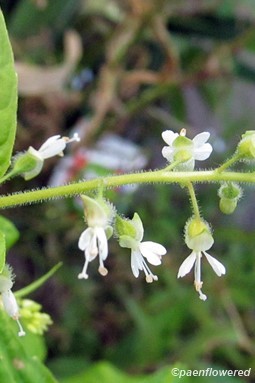
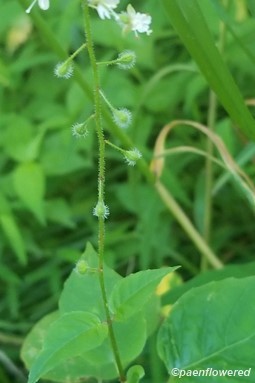
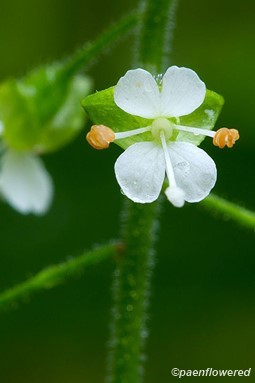
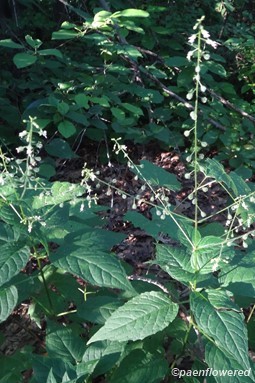
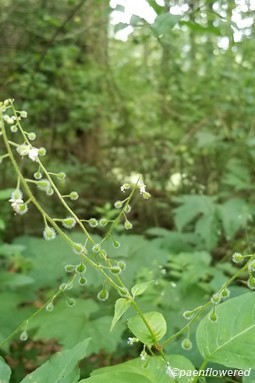
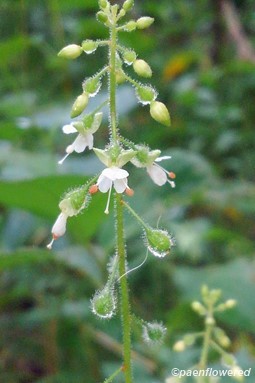
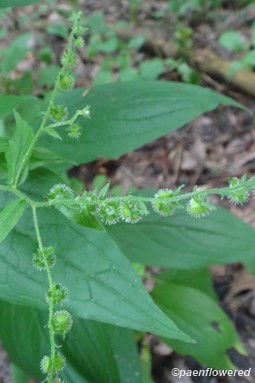


Comments
Have you spotted this plant in your area? We'd love to hear about your experience! Share your comments or questions about the plant below. Comments are moderated before posting.